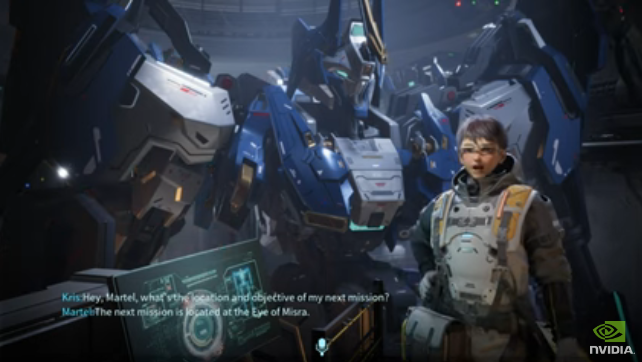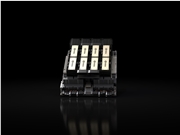Recently, Nvidia is developing an innovative system called ACE, which will enable players to interact with non-player characters (NPCs) in games using natural language.
The first game to adopt the ACE system is Mecha Break, an online mech combat game slated for release in 2025 on PC, Xbox Series X/S, and PlayStation 5 platforms. Players can choose from various types of mechs, such as assault mechs, melee mechs, and sniper mechs, engaging in fierce battles on land and in the air.

The core innovation of the ACE system lies in its ability to support NPCs understanding players' voice commands and conducting bidirectional dialogue. According to Nvidia, the ACE system can "see" players through webcams and recognize surrounding objects. This system combines local device processing with cloud processing to generate voice responses from NPCs.
In a demonstration video, players asked NPCs for detailed information about mechs and missions through voice commands, and completed operations such as selecting mechs, changing coatings, and initiating missions. Although the NPC's responses still seem somewhat mechanical, the system's reaction speed is impressive.
Nvidia has paid special attention to performance optimization in the development of ACE. The company has optimized a streamlined model to run on RTX GPUs, supporting as low as the entry-level RTX 2060, which only occupies 2GB of VRAM. Although this local version is not as powerful as the cloud version, it can still generate responses within about 300 milliseconds, ensuring a smooth gaming experience.
Currently, the application of the ACE system in Mecha Break is still limited, supporting interaction with only a single NPC character. In the future, this technology may be more deeply integrated into the core mechanisms and storytelling of the game. For players without Nvidia GPUs, the operation of the ACE system remains to be determined, potentially defaulting to cloud processing or adopting other alternative solutions.
With the introduction of the ACE system, new possibilities in game interaction are on the horizon. This technology is expected to bring a more natural and immersive experience to games, making interactions with the virtual world more intuitive and vivid.










